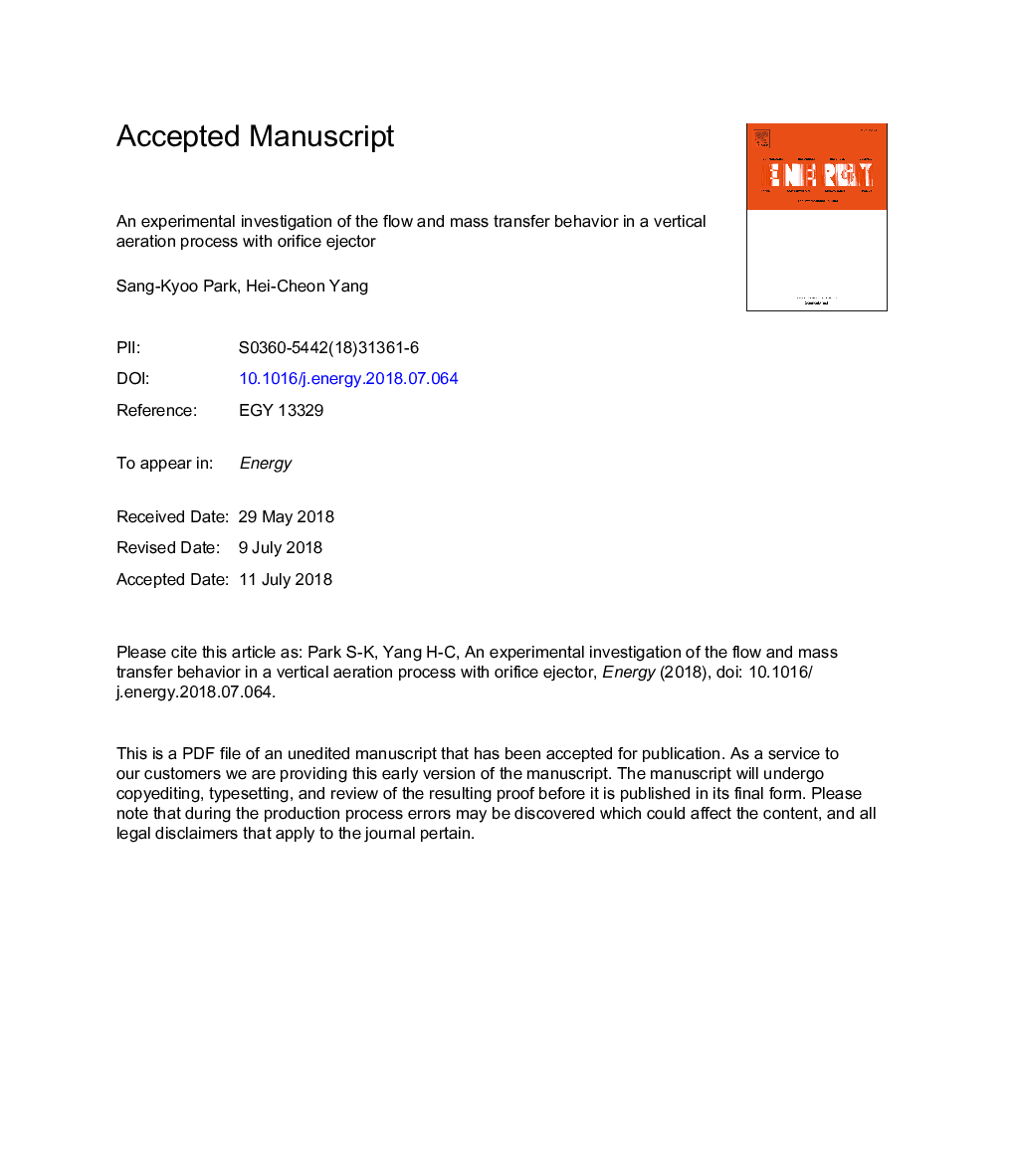| کد مقاله | کد نشریه | سال انتشار | مقاله انگلیسی | نسخه تمام متن |
|---|---|---|---|---|
| 8071030 | 1521390 | 2018 | 25 صفحه PDF | دانلود رایگان |
عنوان انگلیسی مقاله ISI
An experimental investigation of the flow and mass transfer behavior in a vertical aeration process with orifice ejector
ترجمه فارسی عنوان
یک بررسی تجربی رفتار جریان و جرم در یک فرایند هوادهی عمودی با خروجی
دانلود مقاله + سفارش ترجمه
دانلود مقاله ISI انگلیسی
رایگان برای ایرانیان
کلمات کلیدی
جت دو فاز، فرآیند هوای عمودی، کسر حجم هوا، ورودی برق، راندمان انتقال جمعی، خروجی هواپیما،
ترجمه چکیده
جت های دو فاز عمودی به طور گسترده ای در برنامه های کاربردی زیست محیطی و صنعتی برای ظرفیت آنها برای افزایش مخلوط کردن مایعات، واکنش و سرعت انتقال جرم استفاده می شوند. در این مقاله، یک بررسی تجربی بر روی ویژگی انتقال جریان و جرم فرایند هوادهی عمودی با پارامترهای عملیاتی و طراحی خروجی سوراخ ارائه شده است. سرعت جریان اولیه و مکش، غلظت اکسیژن محلول و قدرت ورودی الکتریکی اندازه گیری شد و یک تکنیک تصویربرداری مستقیم با دوربین با سرعت بالا برای تصدیق تصویر جت دو مرحله ای عمودی استفاده شد. داده های تجربی برای محاسبه کسر حجم هوا، قدرت ورودی ویژه، ضریب انتقال جرم حجمی و بازده جرم استفاده شده است. مشخص شد که کاهش حجم هوا و بازده انتقال جرم با تعداد رینولدز کاهش یافته و ضریب انتقال ورودی و حجمی افزایش یافته است. کسر حجم هوا، ضریب انتقال جرم حجمی و بازده انتقال جرم برای پیکربندی انژکتور خروجی با نسبت جابجایی نسبت به گلو کمتر بود. داده های تجربی برای پیشنهاد همبستگی تجربی برای پیش بینی ضریب انتقال جرم حجمی استفاده شده است.
موضوعات مرتبط
مهندسی و علوم پایه
مهندسی انرژی
انرژی (عمومی)
چکیده انگلیسی
Vertical two-phase jets are widely used in environmental and industrial applications for their capacities to enhance fluid mixing, reaction and mass transfer rates. This paper presents an experimental investigation on the flow and mass transfer characteristics of vertical aeration process with the operational and design parameters of orifice ejector. The primary and suction flow rates, dissolved oxygen concentration and electric input power were measured, and a direct visualization technique with a high-speed camera was used to capture the image of the vertical two-phase jet. The experimental data were used to calculate the air volume fraction, specific input power, volumetric mass transfer coefficient and mass transfer efficiency. It was found that the air volume fraction and the mass transfer efficiency decreased with Reynolds number, whereas the input power and volumetric mass transfer coefficient increased. The air volume fraction, volumetric mass transfer coefficient and mass transfer efficiency were higher for the orifice ejector configuration with a smaller throat area ratio. The experimental data was used to propose empirical correlations to predict the volumetric mass transfer coefficient.
ناشر
Database: Elsevier - ScienceDirect (ساینس دایرکت)
Journal: Energy - Volume 160, 1 October 2018, Pages 954-964
Journal: Energy - Volume 160, 1 October 2018, Pages 954-964
نویسندگان
Sang-Kyoo Park, Hei-Cheon Yang,
